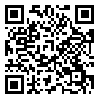BibTeX | RIS | EndNote | Medlars | ProCite | Reference Manager | RefWorks
Send citation to:
URL: http://hakim.tums.ac.ir/article-1-1571-en.html
Effects of an Anti-Stigma Program on Components of Stigma
on Patients with Mental Disorders among Nursing Students
Asayesh H1 (MSc), Rahmani anaraki H2 (MSc), Qorbani M3,4 (PhD), Aliakbarzade Arani Z5* (MSc)
1 Medical Emergency Department, Paramedical Faculty, Qom University of Medical Sciences,Qom, Iran
2 Medical-Surgical Department, Nursing & Midwifery Faculty, Golestan University of Medical Sciences, Gorgan, Iran
3 Department of Community Medicine, Medical Faculty, Alborz University of Medical Sciences, Karaj, Iran
4 Non-Communicable Diseases Research Center, Endocrinology and Metabolism Population Sciences Institute, Tehran University of Medical Sciences, Tehran, Iran
5 Operating Room Department, Paramedical Faculty, Qom University of Medical Sciences. Qom, Iran
Original Article
Received: 30 May 2015, Accepted: 16 Sep 2015
Abstract
Introduction: Stigma on patients with mental disorders is common among general population as well as health care providers and medical sciences' students. This study was carried out to assess the effect of an anti-stigma program on components of stigma on patients with mental disorders among nursing students.
Methods: In this trial, 43 nursing students of Gorgan School of Nursing and Midwifery were recruited and randomly divided into two control and intervention groups. The anti-stigma program consisted of 10 sessions twice a week. The Day's Mental Illness Stigma questionnaire was completed by the students at baseline and after the intervention. The Cronbach's alpha of the scale was 0.79. The data were analyzed in the SPSS-16 using the independent t-test, paired t-test and covariance.
Results: Mean ages were 21.86±0.75 and 21.20±0.61 in the intervention and control groups, respectively. The number of female students were 19 (6.82%) and 17 (0.85%) in the intervention and control groups. After the intervention, the overall stigma score were 115.60±18.66 and 93.69±20.36 in the intervention and control groups, respectively (p<0.05).
Conclusion: Designing appropriate programs in order to provide proper information based on the available facts about mental illness can reduce the stigma among nursing students.
Key words: stigma, anti-stigma program, students
Please cite this article as follows:
Asayesh H, Rahmani Anaraki H, Qorbani M, Aliakbarzade Arani Z. Effects of an Anti-Stigma Program on Components of Stigma on Patients with Mental Disorders among Nursing Students. Hakim Health Sys Res 2016; 18(4): 275- 281.
* Corresponding Author: Qom, Shahid Lavsani street, Qom University of Medical Sciences Educational, Paramedical Faculty, Tel: +98- 913- 7295893, Fax: +98- 253- 7703738. E-mail: zaliakbarzade@muq.ac.ir
Received: 2016/08/3 | Accepted: 2016/08/3 | Published: 2016/08/3
| Rights and permissions | |
 |
This work is licensed under a Creative Commons Attribution-NonCommercial 4.0 International License. |





